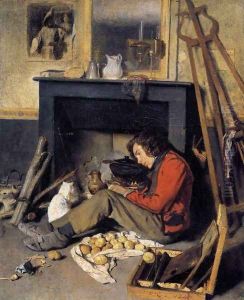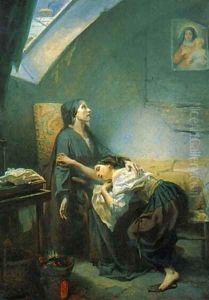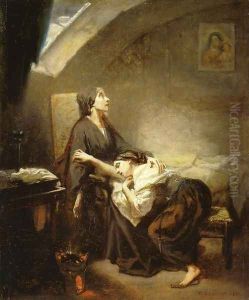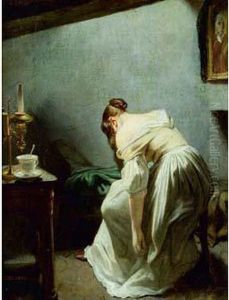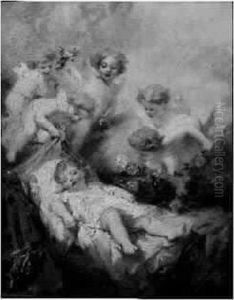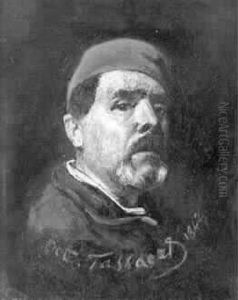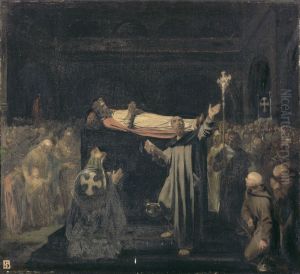Octave Tassaert Paintings
Octave Tassaert was a French painter of the Romantic movement, born on July 26, 1800, in Paris, France. He came from a family with an artistic background; his father, Jean-Joseph-François Tassaert, was a sculptor, and his uncle, Octave Tassaert, after whom he was named, was a noted painter in his time. Despite this artistic lineage, Tassaert initially struggled to find his own path in the art world.
Tassaert's early work was influenced by the Dutch and Flemish schools of painting, but he gradually developed a more personal style characterized by its emotional intensity and social commentary. His paintings often depicted the struggles and hardships of the working classes, earning him the reputation of a 'social painter.' He was particularly known for his somber color palette and the ability to capture the emotional plight of his subjects.
Throughout his career, Tassaert faced financial difficulties and battled with depression, factors that led him to produce works with a melancholic and sometimes morbid tone. His paintings frequently featured themes of poverty, despair, and human suffering, reflecting his own troubled psyche as well as the social realities of his time.
Despite his talent, Tassaert did not achieve significant commercial success during his lifetime. He was acknowledged by his peers and exhibited his works at the Paris Salon, but public recognition and financial security eluded him. This lack of success, along with personal tragedies and poor health, contributed to his descent into depression.
Tassaert never married and lived a life marked by isolation and poverty. His later years were particularly difficult, and he reportedly destroyed some of his paintings in fits of despair. Octave Tassaert died on April 22, 1874, in Paris, at the age of 73. He left behind a body of work that, while not widely known during his lifetime, has been reassessed by art historians and is now recognized for its poignant portrayal of social issues and its contribution to the Romantic movement in French painting.










